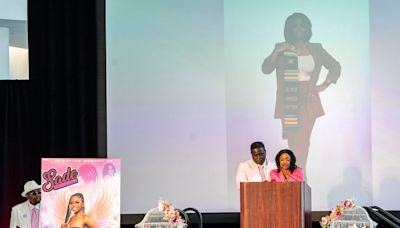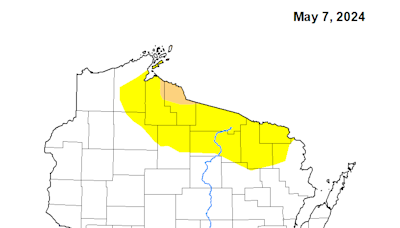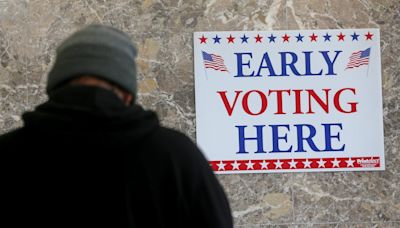Search results
Events
- MAY11Arts & TheatreBallet Folklórico TayahuaGenesee Theater6:00 PMMAY11
 MusicTallan Presents Everybody Wants Some More A Tribute to Eddie Van HalenRoute 207:00 PM
MusicTallan Presents Everybody Wants Some More A Tribute to Eddie Van HalenRoute 207:00 PM - MAY11Arts & TheatreMenopause the Musical 2Pabst Theater7:30 PMMAY11
 MusicMilwaukee Symphony OrchestraBradley Symphony Center7:30 PM
MusicMilwaukee Symphony OrchestraBradley Symphony Center7:30 PM - MAY11
 MusicJeffrey MartinShank Hall8:00 PMMAY11Arts & TheatreMother S Day Laugh-A-ThonUW - Milwaukee Panther Arena8:00 PM
MusicJeffrey MartinShank Hall8:00 PMMAY11Arts & TheatreMother S Day Laugh-A-ThonUW - Milwaukee Panther Arena8:00 PM
Milwaukee (/ m ɪ l ˈ w ɔː k i / mil-WAW-kee) is the most populous city in the U.S. state of Wisconsin and the county seat of Milwaukee County. With a population of 577,222 at the 2020 census , Milwaukee is the 31st-most populous city in the United States, [18] [19] and the fifth-most populous city in the Midwest . [20]
- 617 ft (188 m)
- Potawatomi for "gathering place by the water"
- 1.3 miles to city center. Address: 400 W. Canal St. 1 to 2 hours. TIME TO SPEND. Whether you're a die-hard biker or someone who just happens to be in the area, this is the destination for a visual history of the iconic American brand.
- Address: 400 N Water St. Free, Neighborhood/Area, Shopping. TYPE. 1 to 2 hours. TIME TO SPEND.
- 1.2 miles to city center. Address: 700 N. Art Museum Drive. Museums. TYPE. 1 to 2 hours. TIME TO SPEND.
- 6.5 miles to city center. Address: 10001 W. Blue Mound Rd. Zoos and Aquariums. TYPE. 2 hours to Half Day. TIME TO SPEND.
One of the Best Destinations in the World. Milwaukee, the Cream City, the Good Land, the City of Champions, now has a brand-new title to add to our mantle: one of National Geographic's best destinations for travel in 2023. Listed as one of the 25 "Best of the World" for this year, the publication touted Milwaukee’s lively energy and close ...
- Overview
- History
- The contemporary city
Milwaukee, city, seat (1835) of Milwaukee county, southeastern Wisconsin, U.S. It is a port of entry on Lake Michigan, where the Milwaukee, Menomonee, and Kinnickinnic rivers join and flow into Milwaukee Bay, about 90 miles (145 km) north of Chicago. Milwaukee, the state’s largest city, forms the core of a five-county metropolitan area that include...
The Milwaukee region was once home to several Native American peoples, including the Potawatomi, Menominee, Fox, Sauk, and Ho-Chunk Nation (Winnebago). French missionary and explorer Jacques Marquette camped there in 1674, and fur traders soon followed. The area was opened to settlement after agreements with the Native Americans in the 1830s. In 1835 three settlers bought land in the area and began an intense rivalry: Solomon Juneau, who had arrived in 1818, founded Juneautown north of the Menomonee River and east of the Milwaukee River; Byron Kilbourn founded Kilbourntown north of the Menomonee and west of the Milwaukee; and George Walker founded Walker’s Point, which did not begin to develop until 1850, south of the Menomonee. Juneau and Kilbourn constantly clashed on the building of streets and bridges, each purposely constructing them so that they would not line up with those of the other community. The situation climaxed in 1845 when three bridges were burned by angry mobs; the following year an agreement was signed to make Milwaukee a single community.
Milwaukee grew as a manufacturing and distribution centre in the second half of the 19th century. Flour milling, leather tanning, and iron founding were all major industries. However, Milwaukee became best known for beer production, which began in 1840. German immigrants subsequently opened several large breweries and made Milwaukee a national centre of the industry. For a time the city was the region’s primary lake port for eastbound shipments, particularly wheat. With the arrival of the railroad and the growth of Chicago as a national rail hub, Milwaukee’s importance as a shipping point declined in the late 19th century.
European immigration was largely responsible for Milwaukee’s growth. German settlers played an important and sustained part in the city’s development; a wave of immigration that occurred after Germany’s unsuccessful revolution in 1848 contributed wealthy and cultured refugees. As the city’s largest ethnic group, the Germans developed their own society that included schools, churches, and breweries. Irish formed the second largest group beginning in the mid-19th century. Large influxes of Poles and Italians occurred toward the end of the century. In 1910 immigrants or their children constituted some three-fourths of the city’s population. Although Europeans continued to arrive after 1900, the influx of African Americans from the South became increasingly significant.
After the American Civil War the city found itself involved with labour unions, disputes, and strikes, which lasted until the turn of the 20th century. A Progressive-era reform movement brought Milwaukee a reputation for clean and efficient government. The city is also noted for having had three socialist mayors, Emil Seidel (1910–12), Daniel Webster Hoan (1916–40), and Frank P. Zeidler (1948–60).
Growth was slowed by the Great Depression of the 1930s, but armament production during World War II brought new prosperity. The city’s population, which had grown steadily for decades, reached a peak of some 750,000 in the mid-1960s, after which it gradually began to decline. The proportion of African American residents continued to rise and constituted nearly two-fifths of the city’s population by 2000. Milwaukee remained a leading manufacturing city until the 1980s, by which time many plants had closed; even beer production declined, and, at the beginning of the 21st century, only one major brewery remained in the city.
Students save 67%! Learn more about our special academic rate today.
Milwaukee subsequently developed a much more diversified economy, with services (including health care, finance and banking, and insurance) and high-technology industries becoming major factors. Manufacturing (including medical equipment, mining machinery, engines, leather goods, electronics, padlocks, and motorcycle parts), shipping, and brewing are still important; printing, food processing (including meat products and snack foods), and conventions and tourism also contribute to the economy. The Port of Milwaukee is open year-round and accessible to the largest ships using the Great Lakes and the St. Lawrence Seaway; the major cargoes handled include steel, heavy machinery, and forest products. In addition, the city has extensive road and rail systems and an international airport.
Among Milwaukee’s many institutions of higher education are Marquette University (1881), Alverno College (1887), Cardinal Stritch University (1937), the Medical College of Wisconsin (1893), Mount Mary University (1913), Milwaukee School of Engineering (1903), Milwaukee Area Technical College (1912), and the University of Wisconsin–Milwaukee (1885). Milwaukee has a symphony orchestra and ballet and opera companies, as well as other theatre and music organizations. Notable among the city’s museums are the Milwaukee Public Museum, containing exhibits on natural history, and the Milwaukee Art Museum, which includes an extensive collection of European and American art. The Captain Frederick Pabst Mansion (1892), a 37-room home built by one of the city’s early major brewers, offers tours.
- The Editors of Encyclopaedia Britannica
People also ask
Is Milwaukee a city?
Where is Milwaukee Wisconsin located?
How did Milwaukee become a city?
Did you know Milwaukee is a beer-producing city?
Whether you're a first-time visitor or a frequent traveler to the city, cheers to uncovering the extraordinary experiences that make Milwaukee truly remarkable. Explore the vibrant city of Milwaukee and discover the best restaurants, breweries, and hotels. Find exciting things to do and plan your visit today!
Milwaukee RiverWalk’s 4.8 kilometers wrap around the river and take you into the heart of the city’s nightlife, with dozens of restaurants, pubs and entertainment venues. Shop cool boutiques, galleries and the Milwaukee Public Market in the hip Historic Third Ward, or see the city through the lens of your beer mug on an enlightening and ...
Did you know that Milwaukee is Wisconsin's largest city? ... U.S. News ranked 4,700-plus top properties for 2024. Check out the 50 best. Christina Maggitas February 6, 2024.













































